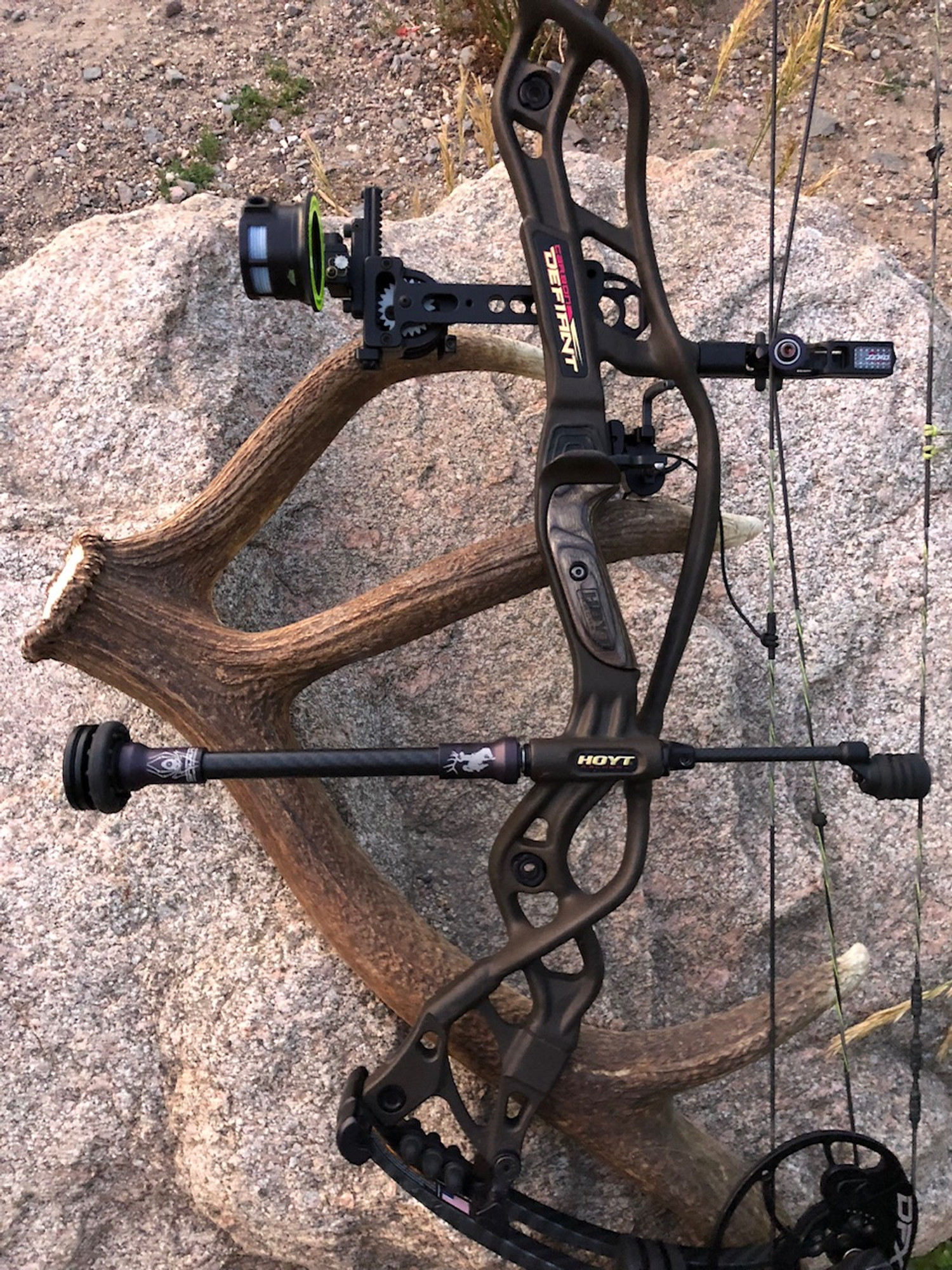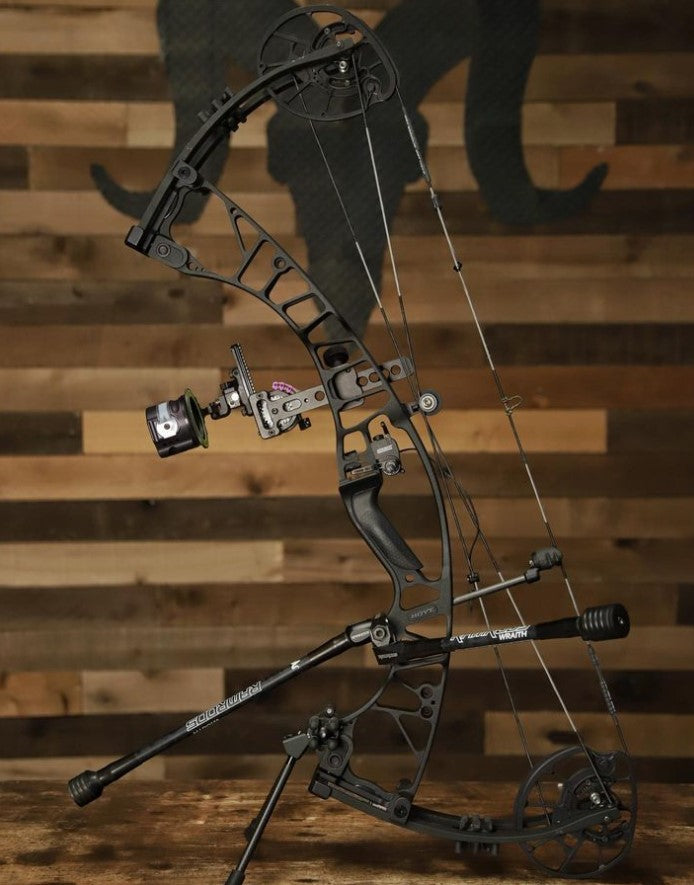Enhance Your Precision: The Duty of Archery Stabilizers
Enhance Your Precision: The Duty of Archery Stabilizers
Blog Article
Master the Art of Archery: Understanding the Value of a Stabilizer in Your Configuration
Archery, an ancient sporting activity that requires focus, precision, and ability, has captivated people for centuries. Whether one is a skilled archer or simply beginning their journey, the relevance of a stabilizer in their arrangement can not be overstated. This essential piece of equipment plays a considerable role in improving accuracy and boosting general efficiency. By recognizing the benefits of using a stabilizer, taking into consideration the best aspects when choosing one, and properly mounting and adjusting it, archers can raise their skills to brand-new heights. Let us explore the details of mastering the art of archery and reveal the very useful duty that a stabilizer plays in accomplishing success on the array.
The Role of a Stabilizer in Archery
A stabilizer plays an important duty in archery by enhancing equilibrium and reducing resonances throughout the shot. When an archer attracts the bowstring and releases it, there is a transfer of power that can trigger the bow to shake. These resonances can negatively influence the accuracy of the shot. Nevertheless, a stabilizer assists to neutralize these vibrations by soaking up and dissipating the energy.
One of the major advantages of a stabilizer is its ability to improve balance. The weight of the stabilizer helps to distribute the weight uniformly, lowering the pressure on the archer's arm and enhancing security.
In enhancement to equilibrium, a stabilizer likewise helps to reduce torque. The weight and layout of a stabilizer neutralize this turning, ensuring a much more constant and precise shot.
Advantages of Utilizing a Stabilizer
The application of a stabilizer in archery provides countless benefits that boost an archer's efficiency and overall capturing experience. By absorbing and dampening these resonances, the stabilizer enhances the stability of the bow, allowing for more exact and consistent shots.
Secondly, a stabilizer helps to balance the bow by including weight to the front end. This weight distribution combats the natural tendency of the acquiesce tip onward upon launch, decreasing the amount of movement and boosting the archer's capability to maintain objective on target.

Last but not least, a stabilizer can additionally work as a shock absorber, reducing the shock and recoil experienced upon release. This not only enhances the convenience of shooting yet likewise reduces the risk of injury or pressure on the archer's body.
Exactly How a Stabilizer Improves Accuracy
Enhancing the precision of an archer's shots, a stabilizer plays a vital role in enhancing total performance. archery stabilizer. By including security to the bow, a stabilizer assists minimize the undesirable activity and vibration that can happen throughout a shot. This reduction in activity allows the archer to maintain a consistent aim, leading to even more accurate and regular shots

In addition, a stabilizer assists to moisten resonances that occur upon release. These vibrations can create the bow to drink, impacting the arrowhead's trajectory and accuracy. By absorbing and dissipating these resonances, a stabilizer helps to maintain the bow's security and ensure a smooth and exact shot.
In addition, a stabilizer can likewise help in stabilizing the weight circulation of the bow (archery stabilizer). By adding weight to the front of the bow, a stabilizer assists to stabilize the weight of accessories, such as sights or quivers, which may be connected to the bow. This balanced weight distribution helps the archer preserve a controlled and stable capturing position, bring about improved accuracy
Factors to Take Into Consideration When Choosing a Stabilizer
When picking a stabilizer for your bow, it is essential to think about several factors that will add to its total performance and suitability for your private shooting design. The very first variable to think about is the length of the stabilizer.
One more element to think about is the weight of the stabilizer. The weight of the stabilizer can affect the balance of your bow. A larger stabilizer can assist to reduce vibrations and enhance stability, leading to a steadier shot. A lighter stabilizer might be preferred by shooters that focus on maneuverability and rate.
Some stabilizers have flexible attributes, such a fantastic read as flexible length or adjustable weights, which allow you to tailor the stabilizer to your specific needs. Carbon fiber stabilizers are light-weight and sturdy, while aluminum stabilizers offer an equilibrium between weight and rigidity.
Various stabilizers might function far better for certain shooting designs, such as target shooting or hunting. It is a good idea to seek advice from with seasoned archers or experts to establish which stabilizer will certainly best fit your individual demands.
Tips for Correctly Adjusting a stabilizer and installing
Appropriate installation and change of a stabilizer is important for maximizing its efficiency and making sure optimal capturing accuracy. When mounting a stabilizer, it is important to comply with a few vital steps to ensure its performance. Initially, determine the proper length of the stabilizer based upon your capturing design and preferences. Longer stabilizers offer more security but can be less maneuverable, while shorter stabilizers use enhanced ability to move but may give up stability. As soon as you have actually chosen the ideal length, affix the stabilizer to the bow using the given mounting equipment. Make sure that the stabilizer is firmly secured and straightened with the bow's riser.
After installing the stabilizer, it is necessary to make modifications to accomplish the desired balance and shot uniformity. Beginning by adjusting the weight distribution along the stabilizer. This can be done by adding or eliminating weights from the stabilizer's weight system. Try out different weight configurations to locate the balance that works ideal for you. Furthermore, think about readjusting the angle of the stabilizer to fine-tune the shot. A small ahead or backwards tilt can influence the bow's balance and how it reacts throughout the shot.

Verdict
Finally, a stabilizer plays an important function in archery by enhancing precision and decreasing bow torque. By including weight to the bow, it aids to balance and maintain the shot. When selecting a stabilizer, variables such as weight, material, and size need to be considered to meet individual requirements. Appropriate setup and modification of the stabilizer are also vital for ideal performance. Understanding making use of a stabilizer can greatly boost the archer's skill and precision.
Additionally, a stabilizer can likewise help in balancing the weight distribution of the bow. By adding weight to the front of the bow, a stabilizer aids to balance the weight of accessories, such as quivers or sights, which might This Site be affixed to the bow. Some stabilizers have adjustable functions, such as adjustable length or flexible weights, which enable you to tailor the stabilizer to your certain needs. Carbon fiber stabilizers are durable and lightweight, while aluminum stabilizers supply an equilibrium in between weight and rigidity.
Longer stabilizers offer even more security yet can be less manoeuvrable, while shorter stabilizers supply raised maneuverability yet might give up stability.
Report this page